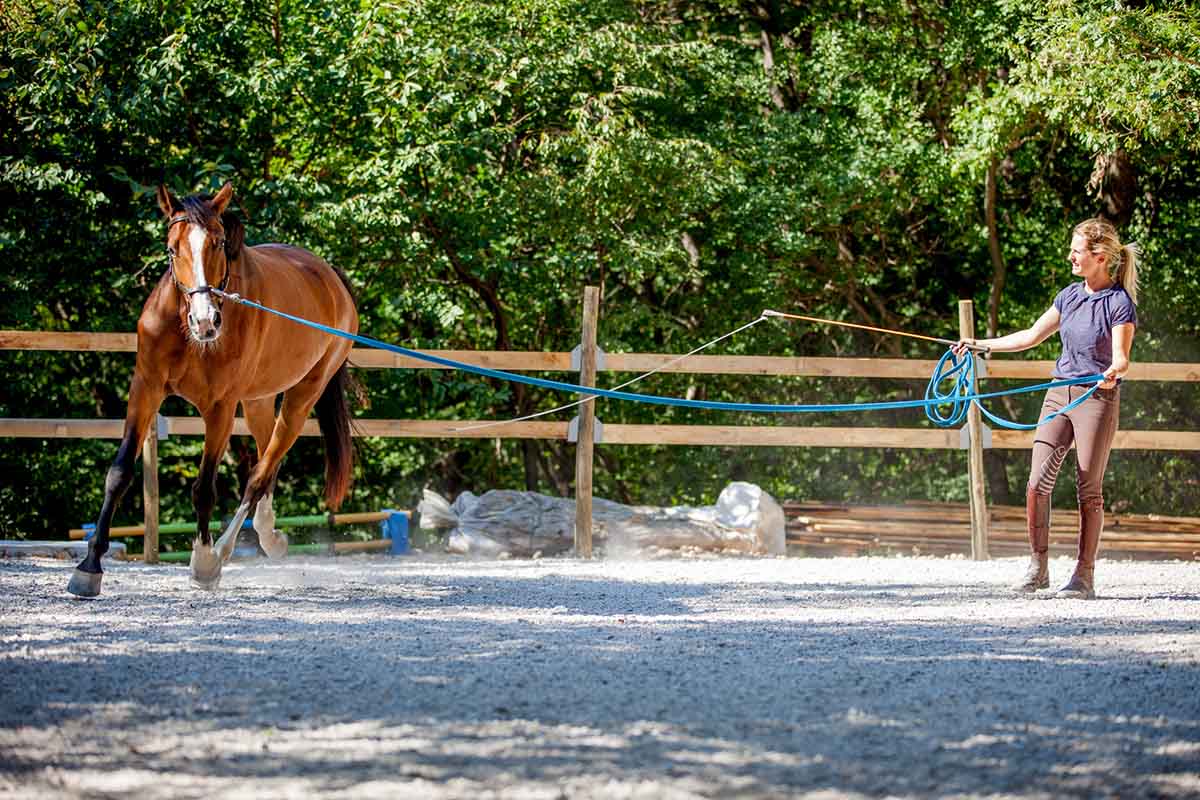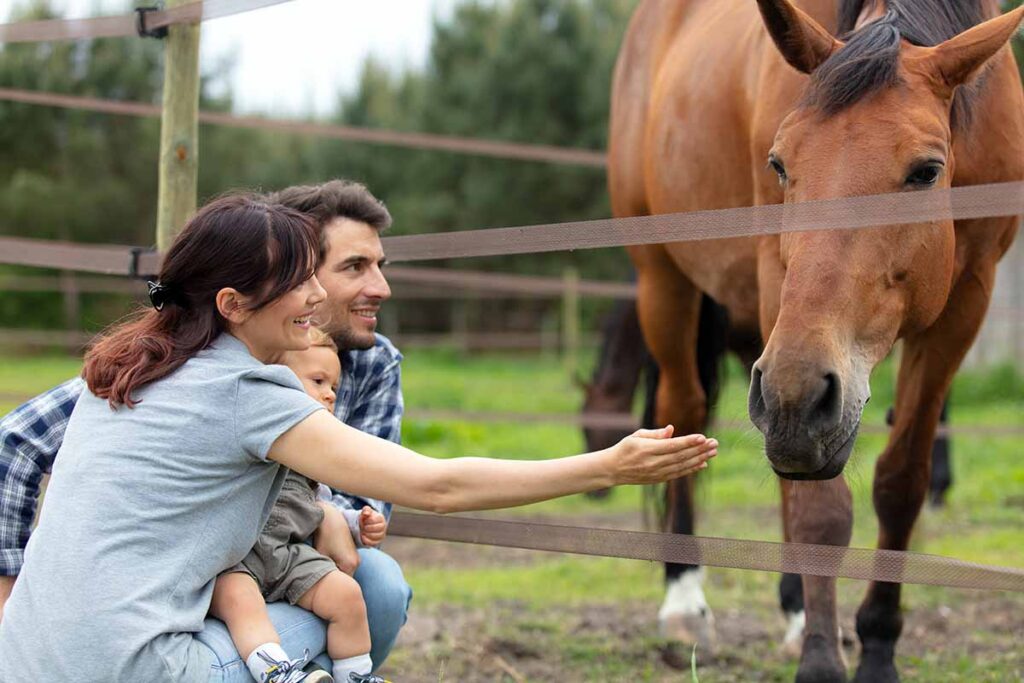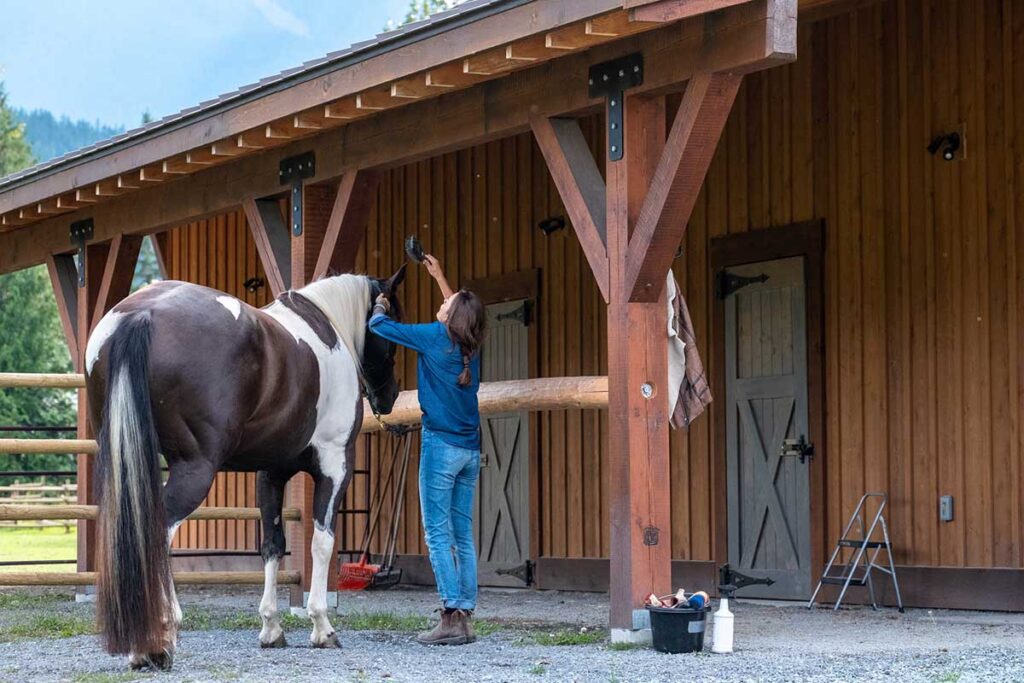Have you ever heard a fellow horse person talking about “lunging” their horse? No, they’re not asking their horse to do lower-body strengthening exercises. They’re performing a common and useful tool for conditioning and training a horse from the ground, which we’ll more accurately refer to as “longeing.”
Done properly, longeing is an effective exercise for practicing transitions, connecting with your horse, and much more. Done improperly, however, it can put both you and the horse at risk of injury. In this article, we’ll walk you through everything you need to know to get started with longeing, including equipment and safety tips.
The Tools You Need for Longeing
To longe a horse, you’ll need the follow equipment, which you can purchase online and at most tack shops:
- A flat halter, a bridle with a mild bit, or a longeing cavesson. The latter is a piece of equipment you can use in place of a halter or bridle; the longe line attaches to a ring on the noseband, as pictured above.
- A 30-foot longe line, some of which include a 24- to 30-inch section of chain at the clip end.
- A longe whip.
- Bell boots and leg protection (e.g., leg boots, polo wraps) for your horse, particularly if he’s shod.
- Gloves and helmet for personal safety.
If you plan to longe your horse in a flat halter, you can attach the longe line in one of three ways:
- Clip it to the O-ring of the halter, below the horse’s chin.
- Thread the snap with the chain through the noseband halter on the near side. Run it over the horse’s nose, thread it through the noseband hardware on the off side, and attach it (with the snap facing out) to the higher halter ring.
- Thread the snap with the chain through the noseband halter on the near side. Run it over the horse’s poll behind the ears, and attach it (with the snap facing out) to the higher halter ring on the off side.
The latter two options give you better control. Choose the one that works best for your horse.


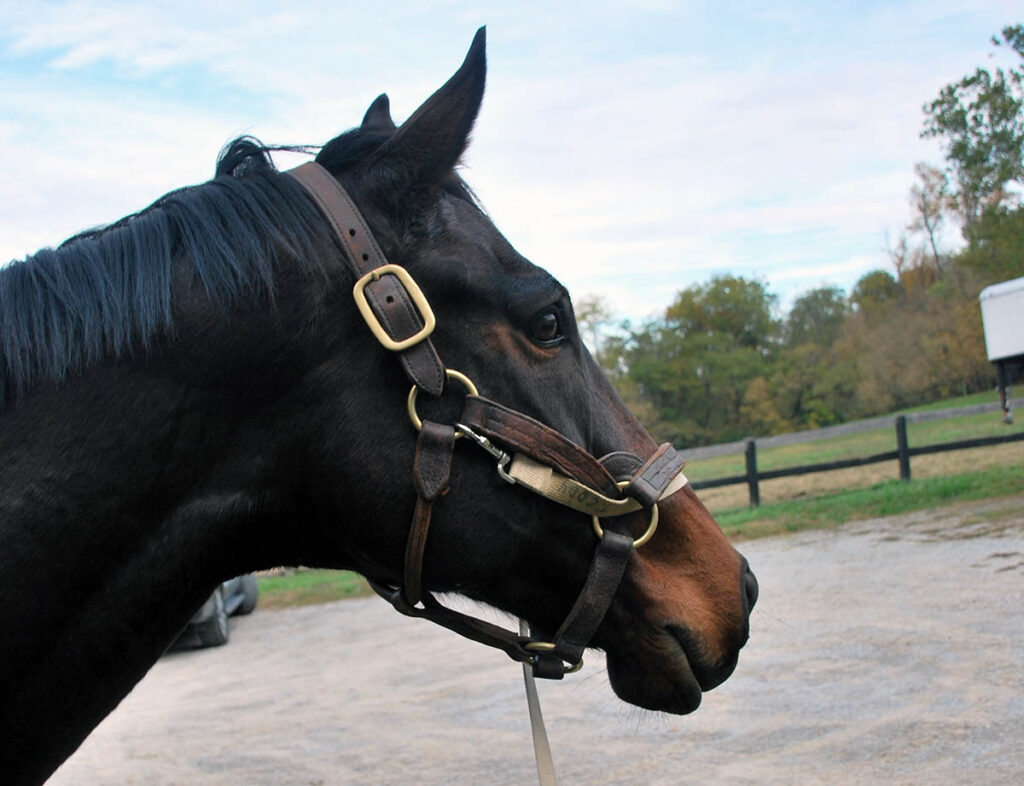
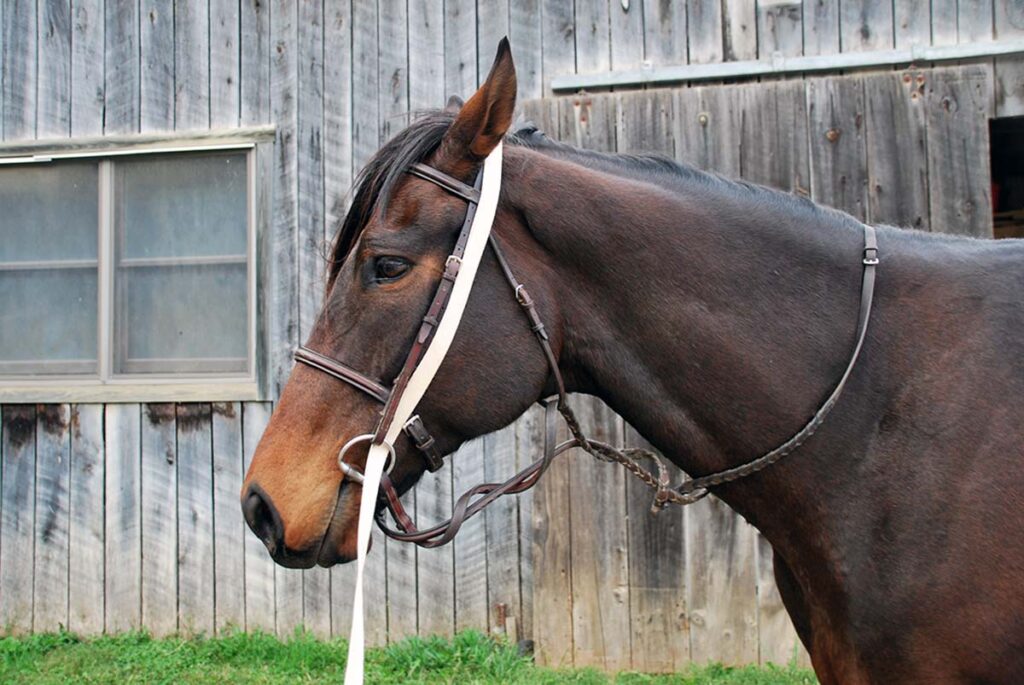

If you choose to longe your horse in a bridle, thread the clip end of the longe line through the cheekpiece of the bit. Run it over the poll behind the ears, and clip it onto the opposite cheekpiece.
How To Longe a Horse
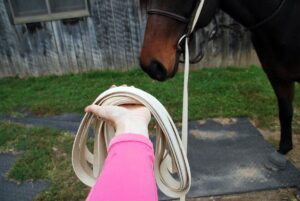
You can longe your horse with or without tack. If you’re longeing your horse to warm him up before riding, you might prefer to do so in full tack. If you’re trying to improve fitness or connection, a saddle might not be necessary.
Once you’ve attached the longe line to your horse’s halter or bridle, hold it folded in your hand at a length you can control. Never wrap it around your hand or drag it on the ground. Stand at a 45-degree angle facing the front of the horse’s shoulder. You don’t want to stand right in front of the horse or at a right angle to him. This puts you at greater risk of getting trampled or kicked, respectively.
As your horse travels to the left, hold the longe line in your left hand, pointing at the ring of the bit or the halter. Hold the whip in your right hand pointing toward the horse’s hip. When he travels to the right, hold the line in your right hand and the whip in your left. Give your horse a cue, such as “walk,” a cluck with your tongue, or raising of the whip, to move out on the longe line. Use a cue such as “whoa” or lowering of the whip to ask him to slow down. You can choose whichever cues work best for you and your horse, as long as they’re consistent.
Your horse will move out on the line in a circle. You want to stand in one place and pivot as your horse goes around you. Keep your body facing his eye. Begin by asking your horse to walk a small circle around you. As you both become accustomed to the exercise, use the whip to gently ask him to walk a wider circle and move at faster gaits.
Take-Home Message
Whether you’re looking to improve your horse’s fitness, build trust, or train specific skills, longeing can be a great way to connect with your equine partner. Work with a trainer to learn how to longe properly or work on more advanced or specific techniques.
Are you enjoying this content? Sign up for My New Horse’s FREE newsletter to get the latest horse owner info and fun facts delivered straight to your inbox!

